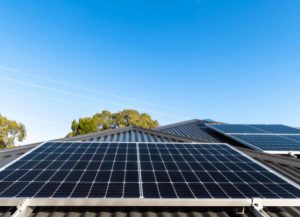Do Solar Cells Degrade and Require Replacement?
Harnessing the sun's power through solar panels is a brilliant stride toward renewable energy. Yet, even the sunniest of ventures has its shadows. A burning question often surfaces: do these bastions of green power, the solar cells themselves, degrade over time and eventually need replacement? Let's cut through the haze and shine a light on the facts with precision and clarity.

Solar Cells: Built to Last but Not Immortal
Solar cells, the critical components of solar panels that convert sunlight into electricity, are marvels of engineering designed for longevity. Generally, solar panels — and the cells within them — are expected to last between 25 to 30 years. This isn't an arbitrary number but a testament to their resilience, grounded in the warranties provided by manufacturers. However, it's crucial to recognize that while built to endure, solar cells are not immune to the sands of time.
The Inevitable Decline: Performance Over Years
As solar cells age, they gradually lose their efficiency in converting sunlight to energy. This process, known as degradation, typically occurs at a rate of about 0.5% to 0.8% annually. This means that after a quarter of a century in operation, most solar cells will retain approximately 80% to 87.5% of their initial efficiency. So, while they do experience a slow fade, it's more of a gentle twilight than a sudden nightfall.
Factors That Accelerate Wear and Tear
Several external factors can hasten the degradation process of solar cells:
- Environmental Stressors: Extreme weather conditions, from scorching heat to freezing cold, can impact the longevity of solar cells.
- Physical Damage: Unforeseen incidents like hail storms or falling debris can cause immediate and sometimes irreparable damage to solar cells.
- Quality and Maintenance: The initial quality of the solar cell and regular maintenance play significant roles in its lifespan. Higher quality cells and diligent upkeep can stave off the effects of aging.
When to Consider Replacement
Acknowledging that solar cells do degrade, the pivotal inquiry becomes: do solar cells wear out? Yes, they do, but not as quickly as one might fear. Replacement becomes a consideration when the efficiency drop impacts the economic benefit of the solar panels, or when damage compromises their functionality. The decision should be informed by performance assessments, ideally conducted by solar energy specialists who can provide insights into the health of your solar system and the potential advantages of upgrading to newer, more efficient technology.
Maximizing the Sun's Bounty: A Proactive Approach
The journey with solar energy, from initial adoption to eventual replacement, should be navigated with both optimism and realism. Understanding that solar cells will degrade over time empowers owners to monitor their system's performance actively and to make informed decisions about replacements. This proactive stance ensures that the benefits of solar energy — both environmental and financial — are maximized throughout the lifespan of the solar panels.
A Sustainable Future Powered by the Sun
The commitment to solar energy is a powerful step toward a sustainable future. By recognizing the enduring nature of solar cells and the factors that influence their lifespan, individuals and businesses can harness solar power effectively and responsibly. The path to renewable energy is illuminated by knowledge and proactive decision-making, ensuring that this investment continues to yield dividends for years to come.